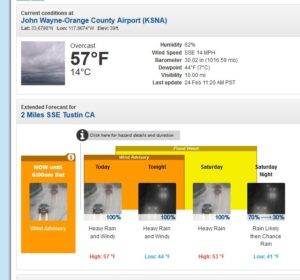It seems like it was only yesterday when I wrote about the 2022 State Business Tax Climate Index, but it’s been a year! This morning, the 2023 Index was released and it’s more of the same. Let’s look at the top ten states:
1. Wyoming
2. South Dakota
3. Alaska
4. Florida
5. Montana
6. New Hampshire
7. Nevada
8. Utah
9. Indiana
10. North Carolina
As the Tax Foundation notes,
The absence of a major tax is a common factor among many of the top 10 states. Property taxes and unemployment insurance taxes are levied in every state, but there are several states that do without one or more of the major taxes: the corporate income tax, the individual income tax, or the sales tax. Nevada, South Dakota, and Wyoming have no corporate or individual income tax (though Nevada imposes gross receipts taxes); Alaska has no individual income or state-level sales tax; Florida has no individual income tax; and New Hampshire and Montana have no sales tax.
Of course, there’s a bottom ten, too. And there are few surprises for tax professionals:
41. Alabama
42. Rhode Island
43. Hawaii
44. Vermont
45. Minnesota
46. Maryland
47. Connecticut
48. California
49. New York
50. New Jersey
Again, let me quote the Tax Foundation:
The states in the bottom 10 tend to have a number of afflictions in common: complex, nonneutral taxes with comparatively high rates. New Jersey, for example, is hampered by some of the highest property tax burdens in the country, has the highest-rate corporate income taxes in the county, and has one of the highest-rate individual income taxes. Additionally, the state has a particularly aggressive treatment of international income, levies an inheritance tax, and maintains some of the nation’s worst-structured individual income taxes.
While California bureaucrats would argue that the high and complex tax and regulatory system in the Golden State doesn’t matter, reality is what it is: It truly does matter. Businesses are relocating out of California, seeking better business environments. Yes, California has a large population and there will always be business there.
I interacted with numerous small business owners when I lived in Irvine, California (I moved to Las Vegas in December 2011). None of these business owners plan on retiring in California. All of them would move their businesses to another state if they could. That’s a tremendous indictment of the business climate in California. Sure, it’s a small sample size (around 70), but it ought to scare politicians in California. Instead, there are propositions on the November ballot that would increase taxes! Well, I guess some in California want to try for the top spot!
In any case, for those thinking about opening a business I recommend reviewing this important study from the Tax Foundation. Taxes matter, and they absolutely impact where you conduct business.

